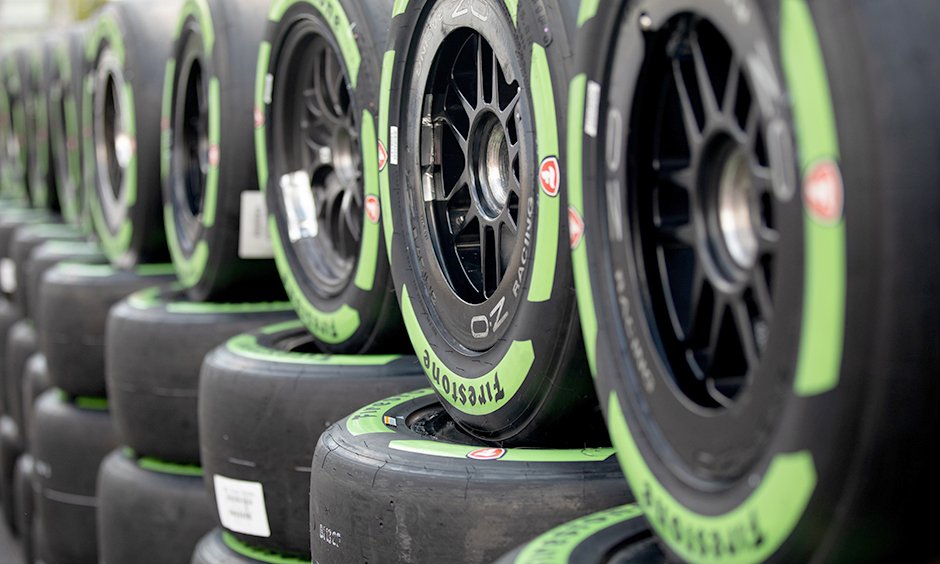Title: Alternative Tires in IndyCar: Pilots’ Concerns and Lundgaard’s Surprising Performance Spark a New Debate
As the IndyCar series approached the Long Beach Grand Prix, the atmosphere among the drivers was filled with skepticism—not towards the track or their rivals, but about the alternative tires, commonly referred to as "greens." Following the morning warmup on race day, numerous pilots voiced their criticisms about these tires, which have been a contentious topic in the racing community.
Kyle Kirkwood, who secured pole position and claimed victory in the previous year’s event, didn’t hold back in his assessment. He lamented, “The green tires are terrible. You really don’t want to race on them,” he told RACER. Kirkwood pointed out that while Will Power seemed to excel with the greens, it might have been due to him utilizing fresh tires—having only completed the initial qualifying phase, it was likely he had a new set fitted.
The alternative tire compound had already disappointed during the season opener in St. Petersburg, and it re-emerged with similar issues at Long Beach, exhibiting rapid degradation. As mandated by the series, Firestone delivered what was requested: a tire that wears out more quickly, necessitating intricate strategic decisions. However, it was tough to find any driver pleased with the outcome.
Conor Daly of Juncos Hollinger Racing took a more diplomatic approach but acknowledged the tires’ shortcomings. “Initially, I didn’t think the greens were bad. We wanted to test both compounds,” he explained. “However, by the end of the practice, some cars seemed to be using motorcycle tires—they were disintegrating. So, I think we’ll see significant wear on the greens.” He added that employing a two-stop strategy, similar to their approach in St. Pete, would be nearly impossible based on the current performance of the tires. “If someone pulls it off, it would be something extraordinary, but someone will definitely try. They seem quite ‘cliffy’—losing performance abruptly.”
Kirkwood echoed that sentiment, predicting, “It’s going to be like St. Pete all over again.” When asked about the optimal race strategy, he speculated whether starting on the primary tires and saving the greens for later in the race might be advantageous, especially as the track would likely offer more grip later on. “Here, it might work differently than in St. Pete. Long Beach is a track where track position matters more than anything else,” he analyzed.
Despite these discussions, shortly after Kirkwood’s interview, Andretti Global decided to start the race on the alternative tires, a choice mirrored by 21 of the 27 cars on the grid, including all of the top 11 qualifiers. This meant that the majority opted to take the "bitter medicine" right from the start.
Daly, who anticipated this strategy reversal, also chose the greens, banking on multiple pit stops. “Every time we think the drivers will make one choice, they end up doing something else. That’s what makes it all the more exciting,” he noted.
However, Christian Lundgaard from Arrow McLaren made a bold choice to defy the trend by starting on hard tires and immediately switching to the greens during his first pit stop. His performance on the alternative tires was impressive, completing 12 laps at a pace that was not only competitive but, at times, even better than those on primary tires—contradicting the prevailing narrative among the drivers.
It is widely recognized among the drivers that the greens have a limited window of high performance before they quickly lose grip. Yet, Lundgaard’s results demonstrated that with the right adjustments and conditions, it is feasible to maintain a consistent pace for a longer duration. His 12-lap stint not only showcased competitiveness but also challenged the prevailing belief that the "green" tires become unmanageable after just a few laps.
Lundgaard’s performance has reignited discussions regarding the use of alternative tire compounds in IndyCar racing. The implications of his results indicate that perhaps the most significant factor is not merely the tire itself, but rather the strategy surrounding its usage and the timing of its deployment during races.
As teams and drivers analyze the outcomes of the race, the focus will likely shift towards understanding how to maximize tire performance and manage degradation effectively. The experiences shared by Lundgaard may encourage other drivers to reconsider their strategies and explore different approaches to tire management in future races.
The debate surrounding the alternative tires is far from over. As teams gather data and insights from each race, they will continue to refine their strategies in hopes of overcoming the challenges posed by the greens. The ongoing discussions among drivers and teams will be vital in shaping the future of tire usage in IndyCar, ensuring that the series remains competitive and exciting for fans.
In conclusion, the Long Beach Grand Prix served as a critical point for the IndyCar series, revealing both the complexities of tire management and the unpredictable nature of racing strategies. The feedback from drivers like Kirkwood and Daly, combined with Lundgaard’s surprising performance, underscores the need for ongoing experimentation and adaptation in the face of evolving racing conditions.
As the season progresses, it will be fascinating to observe how tire strategies evolve and how drivers adapt to the challenges posed by the alternative compounds. With each race, the narrative surrounding tire performance will continue to unfold, making for an enthralling season for both participants and spectators alike. The IndyCar series remains committed to providing thrilling racing experiences, and the discussions around tire strategies will play a crucial role in that mission.
